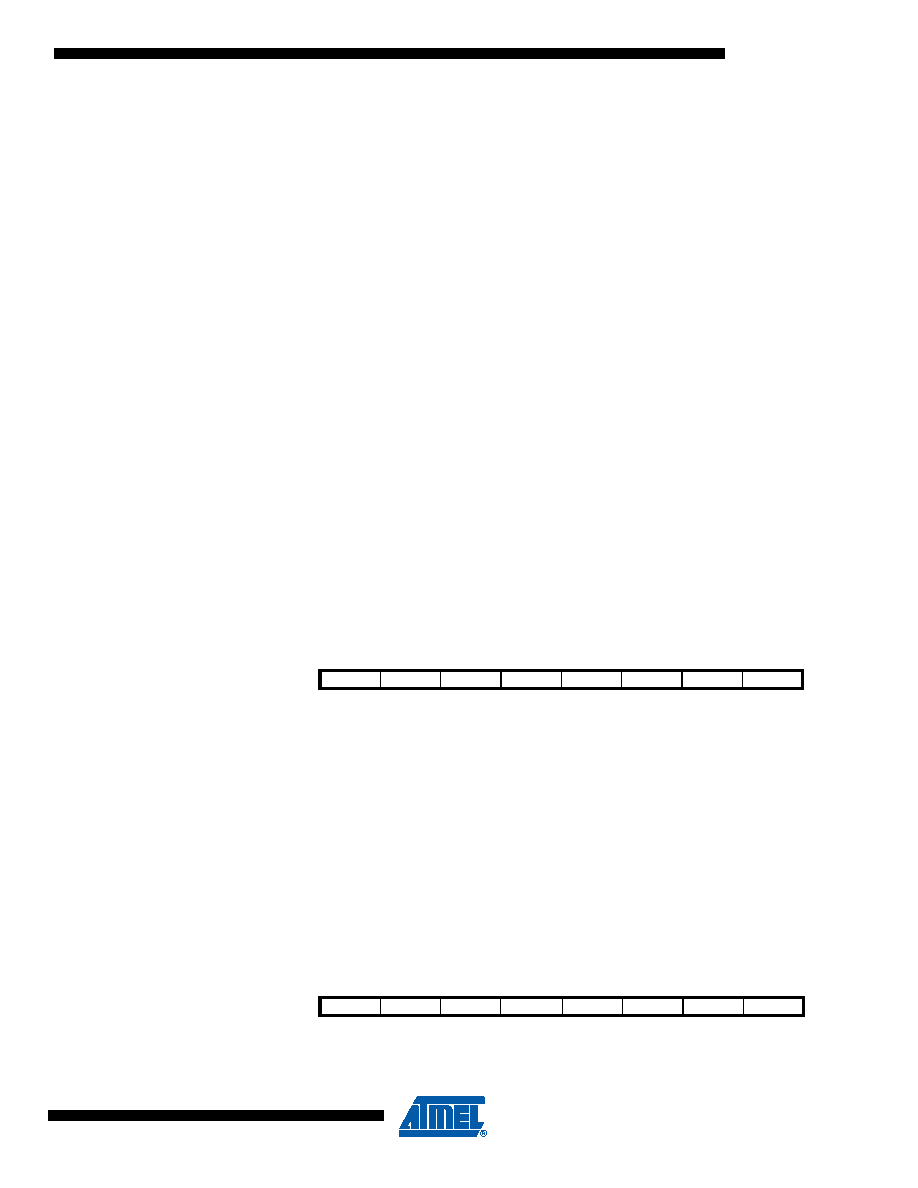- 您現(xiàn)在的位置:買(mǎi)賣(mài)IC網(wǎng) > PDF目錄45321 > IF280C52EXXX-L16SHXXX (TEMIC SEMICONDUCTORS) 8-BIT, MROM, 16 MHz, MICROCONTROLLER, PQFP44 PDF資料下載
參數(shù)資料
| 型號(hào): | IF280C52EXXX-L16SHXXX |
| 廠商: | TEMIC SEMICONDUCTORS |
| 元件分類(lèi): | 微控制器/微處理器 |
| 英文描述: | 8-BIT, MROM, 16 MHz, MICROCONTROLLER, PQFP44 |
| 文件頁(yè)數(shù): | 43/210頁(yè) |
| 文件大小: | 5175K |
| 代理商: | IF280C52EXXX-L16SHXXX |
第1頁(yè)第2頁(yè)第3頁(yè)第4頁(yè)第5頁(yè)第6頁(yè)第7頁(yè)第8頁(yè)第9頁(yè)第10頁(yè)第11頁(yè)第12頁(yè)第13頁(yè)第14頁(yè)第15頁(yè)第16頁(yè)第17頁(yè)第18頁(yè)第19頁(yè)第20頁(yè)第21頁(yè)第22頁(yè)第23頁(yè)第24頁(yè)第25頁(yè)第26頁(yè)第27頁(yè)第28頁(yè)第29頁(yè)第30頁(yè)第31頁(yè)第32頁(yè)第33頁(yè)第34頁(yè)第35頁(yè)第36頁(yè)第37頁(yè)第38頁(yè)第39頁(yè)第40頁(yè)第41頁(yè)第42頁(yè)當(dāng)前第43頁(yè)第44頁(yè)第45頁(yè)第46頁(yè)第47頁(yè)第48頁(yè)第49頁(yè)第50頁(yè)第51頁(yè)第52頁(yè)第53頁(yè)第54頁(yè)第55頁(yè)第56頁(yè)第57頁(yè)第58頁(yè)第59頁(yè)第60頁(yè)第61頁(yè)第62頁(yè)第63頁(yè)第64頁(yè)第65頁(yè)第66頁(yè)第67頁(yè)第68頁(yè)第69頁(yè)第70頁(yè)第71頁(yè)第72頁(yè)第73頁(yè)第74頁(yè)第75頁(yè)第76頁(yè)第77頁(yè)第78頁(yè)第79頁(yè)第80頁(yè)第81頁(yè)第82頁(yè)第83頁(yè)第84頁(yè)第85頁(yè)第86頁(yè)第87頁(yè)第88頁(yè)第89頁(yè)第90頁(yè)第91頁(yè)第92頁(yè)第93頁(yè)第94頁(yè)第95頁(yè)第96頁(yè)第97頁(yè)第98頁(yè)第99頁(yè)第100頁(yè)第101頁(yè)第102頁(yè)第103頁(yè)第104頁(yè)第105頁(yè)第106頁(yè)第107頁(yè)第108頁(yè)第109頁(yè)第110頁(yè)第111頁(yè)第112頁(yè)第113頁(yè)第114頁(yè)第115頁(yè)第116頁(yè)第117頁(yè)第118頁(yè)第119頁(yè)第120頁(yè)第121頁(yè)第122頁(yè)第123頁(yè)第124頁(yè)第125頁(yè)第126頁(yè)第127頁(yè)第128頁(yè)第129頁(yè)第130頁(yè)第131頁(yè)第132頁(yè)第133頁(yè)第134頁(yè)第135頁(yè)第136頁(yè)第137頁(yè)第138頁(yè)第139頁(yè)第140頁(yè)第141頁(yè)第142頁(yè)第143頁(yè)第144頁(yè)第145頁(yè)第146頁(yè)第147頁(yè)第148頁(yè)第149頁(yè)第150頁(yè)第151頁(yè)第152頁(yè)第153頁(yè)第154頁(yè)第155頁(yè)第156頁(yè)第157頁(yè)第158頁(yè)第159頁(yè)第160頁(yè)第161頁(yè)第162頁(yè)第163頁(yè)第164頁(yè)第165頁(yè)第166頁(yè)第167頁(yè)第168頁(yè)第169頁(yè)第170頁(yè)第171頁(yè)第172頁(yè)第173頁(yè)第174頁(yè)第175頁(yè)第176頁(yè)第177頁(yè)第178頁(yè)第179頁(yè)第180頁(yè)第181頁(yè)第182頁(yè)第183頁(yè)第184頁(yè)第185頁(yè)第186頁(yè)第187頁(yè)第188頁(yè)第189頁(yè)第190頁(yè)第191頁(yè)第192頁(yè)第193頁(yè)第194頁(yè)第195頁(yè)第196頁(yè)第197頁(yè)第198頁(yè)第199頁(yè)第200頁(yè)第201頁(yè)第202頁(yè)第203頁(yè)第204頁(yè)第205頁(yè)第206頁(yè)第207頁(yè)第208頁(yè)第209頁(yè)第210頁(yè)

137
8048C–AVR–02/12
ATtiny43U
18.5
EEPROM Write Prevents Writing to SPMCSR
Note that an EEPROM write operation will block all software programming to Flash. Reading the
Fuses and Lock bits from software will also be prevented during the EEPROM write operation. It
is recommended that the user checks the status bit (EEPE) in the EECR Register and verifies
that the bit is cleared before writing to the SPMCSR Register.
18.6
Reading the Fuse and Lock Bits from Software
It is possible for firmware to read device fuse and lock bits. In addition, firmware can also read
data from the device signature imprint table (see page 143).
Note:
Fuse and Lock bits that are programmed, will be read as zero. Fuse and Lock bits that are unpro-
grammed, will be read as one.
18.6.1
Reading Lock Bits from Firmware
Lock bit values are returned in the destination register after an LPM instruction has been issued
within three CPU cycles after RFLB and SPMEN bits have been set in SPMCSR. The RFLB and
SPMEN bits automatically clear upon completion of reading the lock bits, or if no LPM instruction
is executed within three CPU cycles, or if no SPM instruction is executed within four CPU cycles.
When RFLB and SPMEN are cleared LPM functions normally.
To read the lock bits, follow the below procedure:
1.
Load the Z-pointer with 0x0001.
2.
Set RFLB and SPMEN bits in SPMCSR.
3.
Issue an LPM instruction within three clock cycles.
4.
Read the lock bits from the LPM destination register.
If successful, the contents of the destination register are as follows.
See section “Program And Data Memory Lock Bits” on page 141 for more information.
18.6.2
Reading Fuse Bits from Firmware
The algorithm for reading fuse bytes is similar to the one described above for reading lock bits,
only the addresses are different. To read the Fuse Low Byte (FLB), follow the below procedure:
1.
Load the Z-pointer with 0x0000.
2.
Set RFLB and SPMEN bits in SPMCSR.
3.
Issue an LPM instruction within three clock cycles.
4.
Read the FLB from the LPM destination register.
If successful, the contents of the destination register are as follows.
Refer to Table 19-5 on page 143 for a detailed description and mapping of the Fuse Low Byte.
Bit
7
654321
0
Rd
–
–––––
LB2
LB1
Bit
7
6
543
2
1
0
Rd
FLB7
FLB6
FLB5
FLB4
FLB3
FLB2
FLB1
FLB0
相關(guān)PDF資料 |
PDF描述 |
|---|---|
| MD80C32-30 | 8-BIT, 30 MHz, MICROCONTROLLER, CDIP40 |
| MD87C51FB-16 | 8-BIT, UVPROM, 16 MHz, MICROCONTROLLER, CDIP40 |
| MR87C51FB-16 | 8-BIT, UVPROM, 16 MHz, MICROCONTROLLER, CQCC44 |
| MD87C51FB | 8-BIT, UVPROM, MICROCONTROLLER, CDIP40 |
| MZ87C51FB | 8-BIT, UVPROM, MICROCONTROLLER, CQCC44 |
相關(guān)代理商/技術(shù)參數(shù) |
參數(shù)描述 |
|---|---|
| IF280C52-L16 | 制造商:未知廠家 制造商全稱(chēng):未知廠家 功能描述:8-Bit Microcontroller |
| IF280C52T-12 | 制造商:未知廠家 制造商全稱(chēng):未知廠家 功能描述:8-Bit Microcontroller |
| IF280C52T-16 | 制造商:未知廠家 制造商全稱(chēng):未知廠家 功能描述:8-Bit Microcontroller |
| IF280C52T-20 | 制造商:未知廠家 制造商全稱(chēng):未知廠家 功能描述:8-Bit Microcontroller |
| IF280C52T-25 | 制造商:未知廠家 制造商全稱(chēng):未知廠家 功能描述:8-Bit Microcontroller |
發(fā)布緊急采購(gòu),3分鐘左右您將得到回復(fù)。